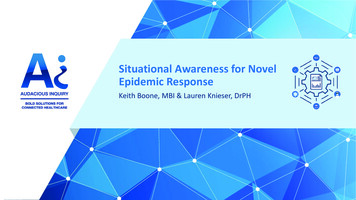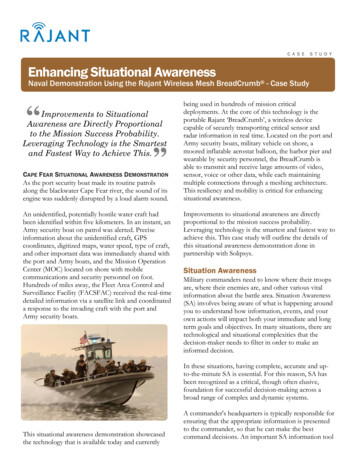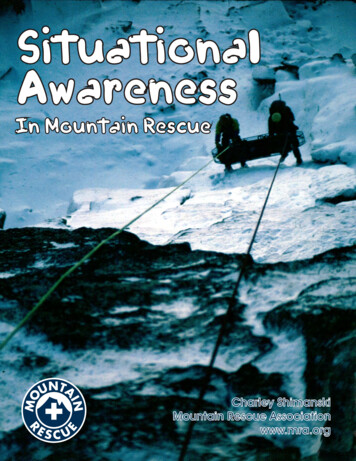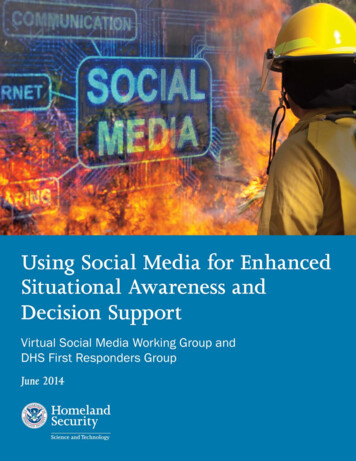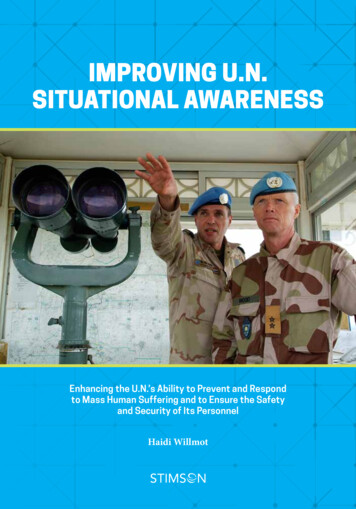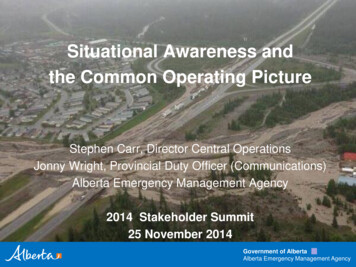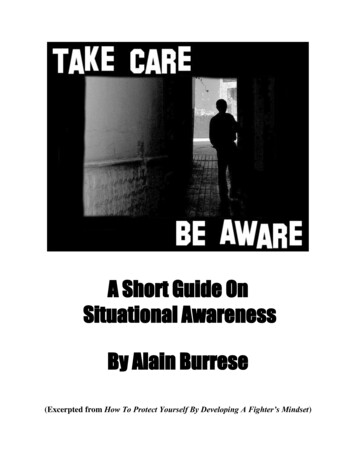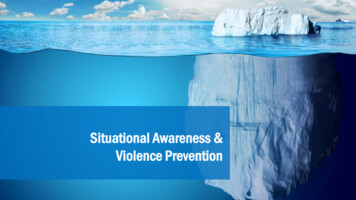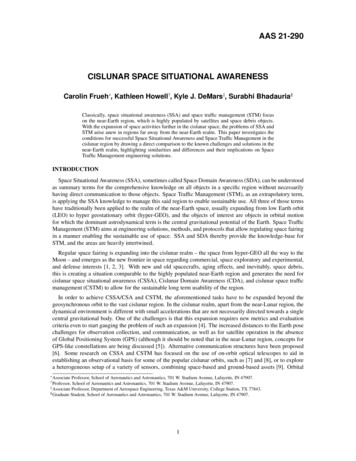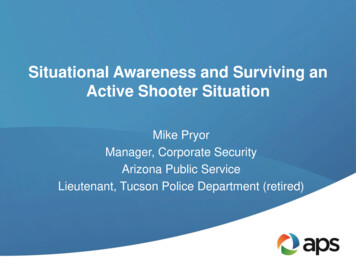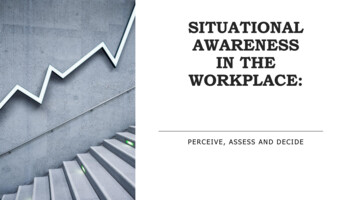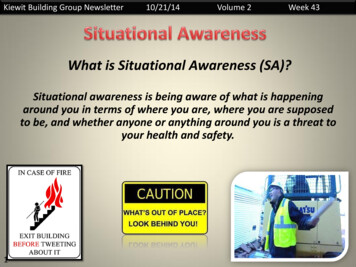
Transcription
Kiewit Building Group Newsletter10/21/14Volume 2Week 43What is Situational Awareness (SA)?Situational awareness is being aware of what is happeningaround you in terms of where you are, where you are supposedto be, and whether anyone or anything around you is a threat toyour health and safety.1
Situational AwarenessExperience andeducation enables usto understand what isgoing on around us andhelps us to determineif it is safe. This meansthat everyone’ssituational awarenessis individual andpotentially different.We use our situationalawareness to makedecisions and instructothers.2
Situational AwarenessWhy is situational awareness important to you? Situational awareness is important to everyone – it is importantthat everyone is aware of their surroundings and the potentialhazards they face. It is important that each individual is lookingout for his or her own safety as well as looking out for theirteammates. Even the most experienced people can lack situational awareness– especially when doing tasks that have become routine.USS Port Royal runs a groundwhen leaving Pearl Harbor Hawaii3Team meetings and job planningcan improve situational awareness
Situational AwarenessWhy should you improve it?Surveyor struckby4 Almost everyone agrees thatsomewhere between 70-80% ofaccidents are attributed, at leastin part, to human error* It is important that you know howmany problems you face and howserious they are. The temporaryloss or lack of situationalawareness is a causal factor inmany construction accidents. Often there is so much ‘going on’in your working environment, oryou become so absorbed in yourown thoughts, that you fail to spotthose things that could pose aserious threat to your health andsafety.*Wiegmann & Shappell, 2003Employee was bendingthe rebar into the uprightposition instead of cuttingit off. Rebar snapped andthe employee fellbackwards.
Situational AwarenessWhere and when shouldsituational awarenesstechniques be used?Assessment of your workingenvironment should occurcontinually, but especially in thefollowing situations: When beginning work on a newproject/contract. When you think the workenvironment has changed since ahazard analysis or work plan waswritten. When working with new ordifferent teammates. Before complacency has set in – itcan be a silent killer!5Team meetings and diligent work planning will improvesituational awareness
How to Improve your situational awareness? STOP––––––Stop the task and think. Look at each step. Ask:Is this a new task?Has the task changed?When was the last time I did this task?Do I feel comfortable doing this task?If not, do I need training?––Look before, during and after completion of the task. Always:Inspect the work area for potential hazards, e.g., unsecured ladders, poorextreme housekeeping.Identify the hazards for each step of the job/task.Evaluate what to do about them; write a JHA or work plan.LOOK–– ASSESS–––– Are workers equipped to perform the task safely? Check they have thecorrect: knowledge; skills; training; and tools.What else do they need to perform the task safely?Help? (Workers should be encouraged to ask for help.)More training? (Workers should not perform the task until they have beentrained.)MANAGE–––––6The SLAM TechniqueManagers should take appropriate action to eliminate or minimize anyhazards on site by:Ensuring the proper equipment is used and is well maintained.Thinking about the task just completed and ask, “What went well?What did not go well?”Asking - Did anything unexpected happened?Asking - How can I be better prepared and plan for this in future?Kiewit work planningtools will help youSLAM safety!
7
8
Situational awareness is being aware of what is happening around you in terms of where you are, where you are supposed to be, and whether anyone or anything around you is a threat to your health and safety. Kiewi
